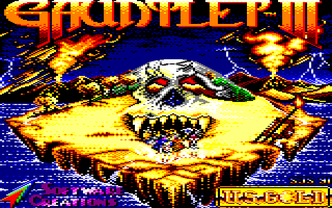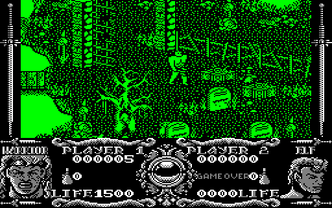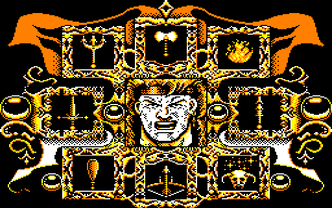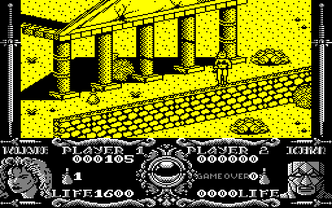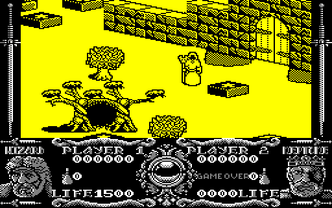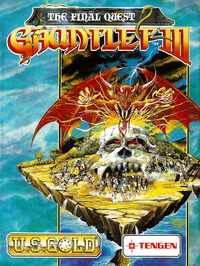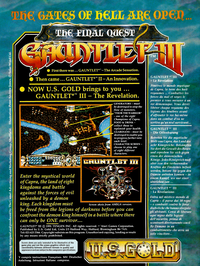Navigation:
Gauntlet III - The Final Quest Amstrad CPC
This game entry is not "published" yet and will not appear in game browers by default! (Edit and set publish = 1)
Enter the mystical world of Capra, the land of eight kingdoms and battle against the forces of evil unleashed by a demon king. Each kingdom must be freed from the legions of darkness before you can confront the demon king himself in a battle where there can only be ONE survivor.... — Game Box
Gauntlet III: The Final Quest is a home computer game by U.S. Gold and Tengen it was released in 1991 for the following systems; Amiga, Atari ST, Commodore 64, ZX Spectrum, Amstrad CPC. It was released one year after Gauntlet: The Third Encounter which was for the Atari Lynx. Besides the standard four main Gauntlet characters, Thor, Thyra, Merlin, and Questor, four new playable characters were available: Petras, a rock man; Dracolis, a lizard man; Blizzard, an ice man; and Neptune, a Merman. The game is viewed from an isometric perspective and includes a two-player cooperative multiplayer mode.
Gameplay
Gauntlet III is an original game with an isometric projection type view that would later be used in Gauntlet Legends and other Gauntlet games made after Legends. Its view is much like that of Solstice and games made with the Filmation engine. The player walks around various areas of each kingdom, with five areas for each of the eight kingdoms giving a total of 40 areas.[4] The locations can be traversed from one area to the next. Places like the forest and castle dungeons have obstacles such as logs and tables blocking the player's path, creating a maze-like area. Each area has at least one doorway or pathway to the next. At times certain things must be done in order to advance into the next area. To avoid the player being lost the programers created a hand that appears from time to time, holding a note to remind the player what they are supposed to do; this clue feature is also an option to call up the clues. Another feature programed into the game is a combination lock key code for which the player must consult a code wheel packaged with the game, needed to open certain doors; if someone made a pirated version of the game they wouldn't be able to get past that portion of the game without the Combination Key.
The enemies in this version, as in other Gauntlet games, come mostly from generators that keep producing the enemies until the generators are destroyed.
Other elements from the series also make an appearance, such as potions that make enemies disappear or weaken them, food (both good and poisonous), invincibility amulets, and treasure chests, some of which can contain traps or other items the player would need.
Source:Wikipedia
